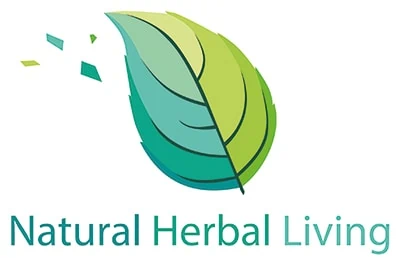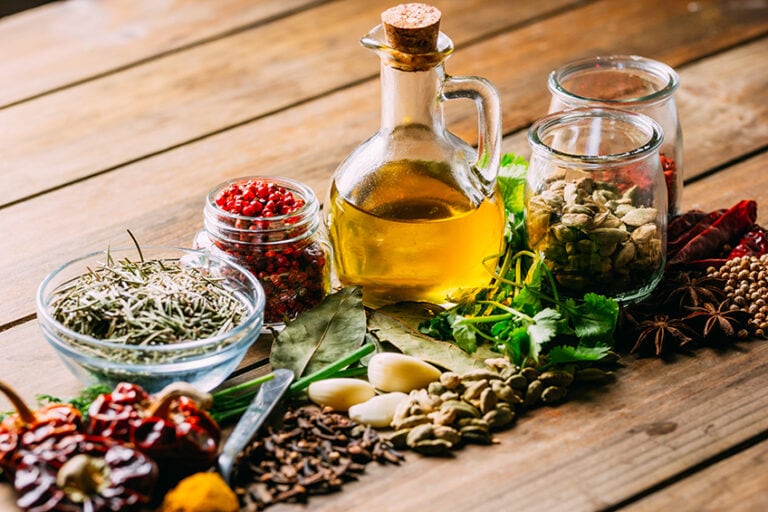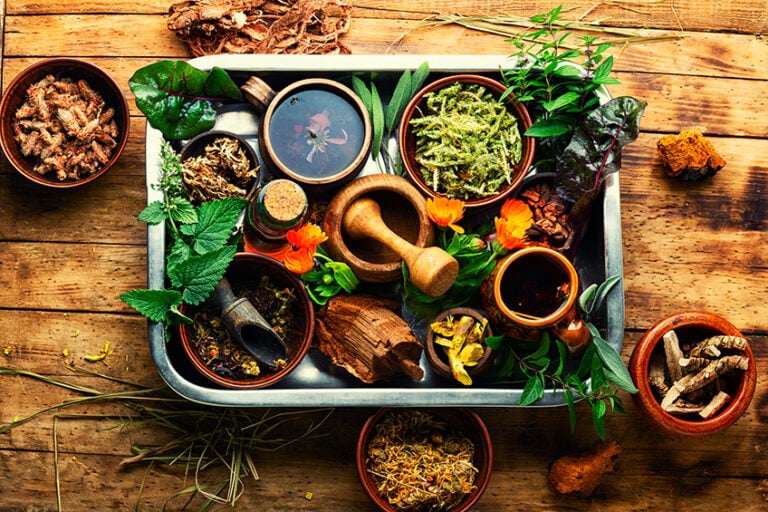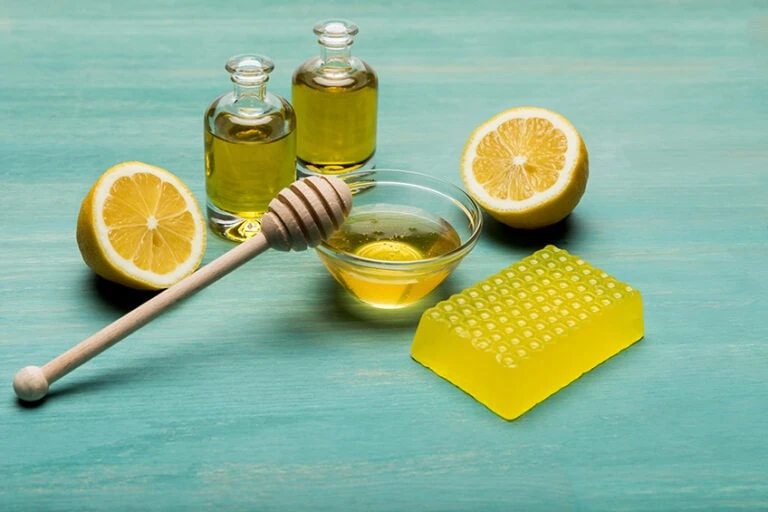Pine Herbal Monograph
This post may contain affiliate links. We may earn a small commission from purchases made through them, at no additional cost to you.
Latin Name: Pinus spp. (including: P. edulis, P. ponderosa, P. aristata, P. strobus, P. contorta, P. strobus, P. sylvestris)
Common Name: Pine
Parts Used: needles, seeds, bark, resin, pollen, roots
Needle Constituents: leucocyanidin, neoabietinic acid, pinosylvin monomethyl ester, strobic acid, antioxidants, volatile oils including α-terpineol (30.2%), linalool (24.47%), limonene (17.01%), anethole (14.57%), caryophyllene (3.14%), and eugenol (2.14%)
Bark Constituents: abietic acid, cis-abienol, leucocyanidin, neoabietinic acid, pinosylvin, monomethyl ester, strobic acid, volatile oils
Resin Constituents: abietic acid, dehydroabietic acid, elliotic acid, isopimaric acid, levopimaric acid, palustric acid, pimaric acid, sandaracopimaric acid, strobinic acid, volatile oils
Pollen Constituents: amino acids, riboflavin, nicotinic acid, pantothenic acid, pyridoxine, biotin, inositol, folic acid
Needle Nutritional Profile: antioxidants, vitamins A and C
Pollen Nutritional Profile (most pines have a similar profile but P. montana, P. sylvestris, and P. nigra have been most tested): Vitamins B1, B2, B6, E, C, D2, D3, A, nicotinamide, folic acid, B-carotin, potassium, sodium, calcium, magnesium, phosporrus, iron, manganese, copper, zinc, and selenium
Nut Nutritional Profile (P. sibirica, P. koraiensis, P. monophylla and P. edulis have larger nuts that are easier to harvest): 100g of dry pine nuts averages 673 calories. Rich in mono-unsaturated acids like oleic acid, pinolenic acid, vitamin E, and B vitamins such as thiamin (B1), riboflavin (B2), niacin (B3), pantothenic acid (B5), vitamin B6, and folates. They also contain manganese, potassium, calcium, iron, magnesium, zinc, and selenium.1
Actions: anti-inflammatory, analgesic, anti-catarrhal, nutritive (nuts, pollen, and needle), androgenic (pollen), antimicrobial, warming, astringent, purgative (boiled bark), immunomodulatory, carminative, diuretic, insecticidal, lymphatic
Pine and People
There are days when I feel like just running away. I think everyone has these days, days when you feel drawn somewhere else. Somewhere with peace and sanity, where the perfect beauty of the wind blows through the trees, water trickles through the creek, and the sweet resinous scent of pine hangs in the air. On these days, I pack up the kids with a little lunch, jump in the van and drive to my favorite place at the base of the Rocky Mountains where I am surrounded by ponderosa and lodgepole pine, bird songs, and the peace of the forest. Here I breathe deep, exhale, and smile. The scent of the pine forest is immediately uplifting and puts me at ease, washing away the stress of the day.
The concept of forest bathing is a new one developed for city dwellers in today’s fast-paced world. It’s a term used to describe going into the woods, unplugging, and breathing deeply. This helps people overcome their “nature deficit disorder” and has been reported to reduce stress, anxiety, depression, and improve mood.
In Japan, a small study was conducted which demonstrated forest bathing’s ability to enhance natural killer T-cell production in the body. After 6 hours in the forest over the course of two days, every single participant’s natural T-cell activity was increased by 50%.2 This potent immunomodulating activity occurred as a result of simply spending time in a coniferous forest—not even working with the herb topically or internally!
About Pinus
Pinus is a beautiful genus of coniferous evergreen trees with over 144 species. The fossil record indicates that coniferous trees have been around for over 200 million years.3 They now make up about 1% of the plant population of the earth, and most regions in the northern hemisphere have their own species. Here in Colorado, we have piñon (P. edulis), ponderosa (P. ponderosa), lodge pole pine (P. contorta), and bristle cone pine (P. aristata).4 We also see a lot of eastern white pine (P. strobus) as a landscaping plant.
Pines are closely related to cedars, junipers, and firs, which are also conifers, but with their needles arranged differently. Pinus needles are in bundles of two or more (depending on the specific species) wrapped in a paper-like sheath at the base of each needle cluster. The needles vary in size but tend to be longer than those on spruce or fir trees. Pine cones are woody and brittle. They stand upright from the branch instead of dangling down. Pines can be found growing all over the world, in a variety of climates and elevations.
There are many distinctions in the different species of pine, but the most important for this monograph is the difference between hardwood and softwood pine. Softwood pines tend to have needles in groups of five attached to twigs radiating off of a central branch. Hardwood pines have needles in groups of two or three per twig. Soft pine needles contain less pitch and turpentine, and are generally better tasting. To me, they taste like a lemony forest! I find the harder pines taste more like something I should clean my floor with, not drink.
Thankfully, all pines are safe to consume, and they have no poisonous look-alikes, so I suggest getting a good plant ID book or two and getting acquainted. Use the Internet to find out the Pinus species near you and perhaps its medicinal uses.
Because pines are evergreen trees, the middle of winter is the perfect time to go hiking through the forest to find them. They’ll have green needles this time of year, while all the other trees will be dormant. As I mentioned earlier, pine needles are extremely high in vitamin A and C, which makes it a wonderful winter medicine. Just harvest a small cluster of pine needles, cut them up, and steep them for 5-10 minutes in hot water to enjoy this nourishing winter remedy. Some sources say that Native Americans showed the Europeans how to fight off scurvy by enjoying a pine needle infusion just like this.
The Iroquois nation made a pact of peace with other tribes under the white pine tree, burying their weapons under it, as instructed by The Great Peacemaker (a Native American leader and prophet of sorts). The five needle clusters of the white pine symbolized the five tribes in the Iroquois nation.
Medicinal Parts of Pine
Pine is such a generous herbal ally—it shares its medicine from almost every part of itself.
Pine Needles
Pine needles can be harvested year-round as needed to be enjoyed as a tea, but my favorite time to harvest is in the spring, because I especially love the new growth at the terminal ends of the branches. These fresh needles are tender, a lighter color than the older needles, and when lightly steamed, they make an amazing nutritious addition to meals. They are delectable when infused in butter, tossed into a salad or pasta, or used like rosemary to season light meats such as poultry and fish. Not only are they delicious and nutritious but, being carminative, they also help to encourage healthy digestion.
In a tincture (fresh needles in 95% alcohol), pine is a perfect aromatic bitter to add to bitter mixes for people with stagnant, wet digestion paired with depression. I only use about 2-5% of pine needle tincture in the bitters blend, but have found it to have such a dramatic dispersive effect on the digestive system that it comes with an almost immediate uplifting effect. I would guess this is because of the aromatic nature of the plant. I have actually found it to be so effective that I only have to include pine in the first round of bitters. When the client comes back for more, I can usually move them to a formula without pine, and they continue feeling much better than before.
Pine needles, bark, and resin are all useful expectorants. The needles can be infused, the bark decocted, and the resin just chewed on. The needles are the mildest expectorant, and the resin is the strongest, the latter inducing productive coughs and softening bronchial mucous.5,6,7
Pine Bark
Like the needles, pine bark is extremely high in antioxidants and vitamin C, and it’s easier to store for long periods of time. It has recently been studied for its effects against cancer, heart disease, blood clotting disorders, varicose veins and more.5,8 Although many of these studies test pine bark extract, the decocted bark should still be sufficient to benefit one’s health.
Pine Resin
Pine resin is a viscous substance that pine and other coniferous trees produce when they have a major wound. This sticky goo is exuded to protect the tree from foreign invaders that could further damage it, like insects, bacteria, and fungi. As the resin ages and the weather cools, it becomes firm, trapping possible invaders in its oozy path.
Resin is not sap, but a different substance that functions as the tree’s immune system. It’s like those killer T-cells I mentioned earlier, going out and protecting the body from foreign invaders.6 Because resin is so important to the health of the tree, we need to be conscious when harvesting it. Never harvest resin directly from a tree’s wound. It will drip down the side of the pine and onto the ground. Feel free to harvest that resin on the ground, but leave the tree’s scab alone so that it might stay healthy and heal.
Now that we know what the pine resin does for the tree, what kind of medicine do you think it holds for us? Its antimicrobial nature makes it a potent antibacterial and antifungal. A small amount of resin tincture (1:5 ratio in 95% alcohol) is effective against both respiratory and digestive infections. Use the tincture with caution, though, because resins in the digestive system can be very harsh!
Topically, pine resin is helpful for all sorts of aches and pains. I include it in my warming salve to help enhance circulation and ease pain associated with cold, damp, stagnant conditions like rheumatoid arthritis.
Pine resin’s anti-infective nature also makes it an appropriate and unique addition to a salve used for scratches, scrapes, and other surface wounds. In fact, I have found that even just warming up a piece of resin and putting it on a deep splinter or abscess will bring heat to the area, encourage swelling (a natural immune system response to bring white blood cells to the area), and pull the splinter or abscess right out over about 24 to 48 hours. This is a useful technique to know if you’re ever out in the woods and in need of first aid.6,7
Amber
Amber, or succinum, is fossilized pine resin from millions of years ago. It is an herb, fossil, rock, and gem all in one. As an herb, it’s used in Traditional Chinese Medicine (TCM), and its Chinese name is Hu Po, which translates to “tiger soul.” In TCM, succinum is considered a heavy and settling sedative with several specific indications: subduing fright, tranquilizing the mind, and relieving convulsions (it’s even used in children’s epilepsy formulas), alleviating water retention, promoting urination, promoting blood circulation, and removing stagnation, plus it’s a qi blood tonic.9
Interestingly, some people wear amber necklaces to relieve pain. Babies are given amber necklaces to relieve teething pain, but adults can wear them to relieve local pain as well. The theory is that the oil is released from the amber slowly and works as a topical analgesic. Many mothers say amber necklaces work, and some say they don’t. For my children, Baltic amber necklaces sure did seem to help with teething pain, but I have no studies to back up my observations. As a substance that is supposed to “anchor, settle and calm the spirit,”10 perhaps it works on an energetic level as well as a biochemical one.
In a class I took with Kiki Geary, a TCM doctor, she discussed the health benefits of burning amber as an incense. Amber is associated with the wood element, which aligns with the inside of the spinal cord, the chakras, and the internal organs.11
A pine tree has to have a deep and dramatic wound to exude resin, and as the resin seeps from the tree, it picks up debris. This debris is held in the resin, fossilized over millions of years, and held tight. That’s how amber is formed. It is like a tiger (a symbol of qi or life force) stuck in a cage pacing back and forth, back and forth, waiting to escape. By crushing the amber and allowing it to burn, we release the tiger within. Think of that as a metaphor for all that traumatic debris caught in our deepest and darkest places! By releasing our tiger, we release our soul, our ability to create, and it helps us grow on our spiritual axis toward the heavens.
When using amber as an incense, it can cause deep, buried psychological stuff to come to the surface; and it has the ability to release painful memories and trauma, so amber should only be used by those who are able to work through their buried and crystalized damage, and are ready to move to the next level of emotional and spiritual healing.
Pine Pollen
Pine pollen is another preparation used in TCM. It’s also used in Korea as a whole-body tonic, and as a food that increases vitality. It comes from the catkins or male reproductive organs of the pine tree. Every spring to early summer, pines will produce massive amounts of pollen that are spread throughout the area. You know that yellow dust on your car every June? That’s pine pollen!
In his book, Pine Pollen: Ancient Medicine for a New Millennium, Stephen Buhner discusses this beautiful substance in depth. (I highly encourage reading this book.) The book distinguishes between including pine pollen in food, where the health benefits are that of a tonic, nutritive, adaptogen, antioxidant, immune and endocrine troporestoritive, anti-inflammatory, antiarthritic, antitumor, anticholesteremic, and hepatotonic; versus consuming a liquid extract made in 95% alcohol, which is used primarily by men after andropause to increase testosterone levels in the blood. He is careful to clarify that pine pollen, as a daily additive to food, is a wonderful overall tonic for anybody, but the tincture should only be used by men trying to increase testosterone levels. He also states that pine pollen tincture is in no way useful to young men who want to increase muscle mass. It isn’t a steroid, he reminds readers, but a useful hormone balancer for older men.12
Pine Nuts
Pine nuts are delicious and nutritious, containing vitamins B1, B2, B6, E, C, D2, D3, A, nicotinamide, folic acid, B-carotin, potassium, sodium, calcium, magnesium, phosphorus, iron, manganese, copper, zinc, and selenium.1 These seeds (not actually a nut) are hearty and full of essential fatty acids. Squirrels eat pine nuts during the cold winter months to stay fed and healthy. Humans depleted in fat-soluble vitamins and nutrition can use them similarly.6 Pine nuts are great in pesto or in trail mix as an alternative for those with nut allergies or for kids who attend a nut-free school.
Cautions
The volatile oils in pine needles and bark mean that pine can be hard on the kidneys when taken over long periods of time. Pine bark decoction taken in large quantities has been used as a purgative, so use it sparingly. Pine resin and amber can be very hard on the digestive tract when taken internally without a balanced formula. Use with caution and refer to TCM formulas containing Hu Po to see how they balanced that side effect. Some people are allergic to pine pollen and nuts, but this is rare. Neither safety nor harm has been established in pregnancy or breastfeeding, although the pollen and nuts are both used frequently as food for women and men alike in China and Korea, so as a food, it can be presumed safe.
I hope my overview of pine will give you a new appreciation of this abundant and generous plant ally. I hope that throughout this issue, you can learn new and interesting ways to work with this beautiful tree and are encouraged to learn the species in your area. Pack a picnic, go up into the woods, sit at the base of a tree and listen. There are many lessons this beauty has yet to teach us. All we have to do is listen, observe, and breathe.



